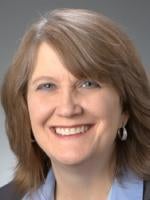The SECURE 2.0 Act of 2022 (SECURE 2.0) significantly changes the legal and administrative compliance landscape for U.S. retirement plans. Foley & Lardner LLP is authoring a series of articles that take a “deep dive” into key SECURE 2.0 provisions that will affect how employers structure and administer their 401(k) plans, pension plans, and other types of employer-sponsored retirement plans.
If you’ve been following our Diving Into SECURE 2.0 series of articles, you’re well aware of the many ways SECURE 2.0 affects retirement plan administration and structure. For the most part, the SECURE 2.0 changes we’ve covered (including – but not limited to – RMD changes, student loan matching, and rules simplifying plan administration) apply to all defined contribution retirement plans.
This month, however, we’re focusing on SECURE 2.0 changes specific to Internal Revenue Code (Code) Section 403(b) plans and governmental Code Section 457(b) plans sponsored by nonprofit hospitals, universities, charities, and governmental entities.
Governmental 457(b) Plans
Elimination of the “First Day of the Month” Requirement (Mandatory). There's just one SECURE 2.0 provision affecting governmental 457(b) plans, and it actually conforms their administration to that of most defined contribution plans.
Before the passage of SECURE 2.0, governmental 457(b) plan participants were required to make changes to their elective deferral rate before the first day of the month for which their contributions were to be made. Code Section 401(k) and 403(b) plan participants aren’t subject to such a requirement, however.
SECURE 2.0 requires governmental employers to eliminate the “first day of the month” requirement effective for tax years beginning on or after December 29, 2022, thereby allowing governmental 457(b) plan participants to change their deferral elections at any time before the compensation being deferred becomes available.
Note: This SECURE 2.0 change does not apply to 457(b) plans sponsored by non-governmental employers, such as nonprofit organizations. Participants in those plans must still make changes to their elective deferral elections before the beginning of the month for which that election will apply.
Code Section 403(b) Plans
Expansion of Long-Term Part-Time Employee Rules (Mandatory). As discussed in detail in our prior article, the original SECURE Act required 401(k) plan sponsors to permit “long-term, part-time employees” or LTPTs (i.e., part-time employees who’ve worked at least 500 hours per year for three consecutive years) to make elective deferrals to such plans. Effective for plan years beginning on or after January 1, 2024, SECURE 2.0 reduced the length of service requirement from three to two consecutive years.
More importantly for this article, though, SECURE 2.0 also expands the LTPT employee rules to 403(b) plans subject to ERISA. (Contact your Foley benefits attorney if you have questions about whether your plan is subject to ERISA.) So, starting in 2025, such 403(b) plan sponsors must allow LTPTs to make elective deferrals to their plans. LTPTs can, however, be excluded from matching, profit sharing, and other employer contributions until they meet the plan's eligibility requirements.
Expanding the LTPT rules to 403(b) plans may complicate administration for some 403(b) plan sponsors. Section 403(b) plans are subject to the Code’s “universal availability” rule, which requires that most employees be permitted to make elective deferrals to 403(b) plans. One exception to that rule is for employees who normally work fewer than 20 hours per week. While such employees can currently be excluded from 403(b) plans, they may now be eligible to participate under the expanded LTPT rules.
Updated Hardship Withdrawal Rules (Optional). Before SECURE 2.0's enactment, a 403(b) plan participant’s hardship withdrawal request could be funded from the participant's elective deferrals, but not from earnings on those contributions. SECURE 2.0 expands the sources 403(b) plan participants may use to fund hardship withdrawals.
Effective for plan years beginning on or after January 1, 2024, 403(b) plan sponsors may allow participants to take hardship withdrawals from (i) elective deferrals; (ii) qualified nonelective contributions and qualified matching contributions (each a type of corrective contribution); and (iii) earnings on those amounts. SECURE 2.0 also confirms that 403(b) plan participants will not be required to take a plan loan (if available under the plan) before requesting a hardship withdrawal.
Investment in CITs (Optional). A collective investment trust (CIT) is a group of pooled retirement plan accounts held by a bank or trust company that can invest in a wide range of investment vehicles – equities and fixed income investments, mutual funds, exchange traded funds, etc. CITs are intended to be a cost-effective investment alternative for plan participants.
SECURE 2.0 technically permits, effective as of December 29, 2022, 403(b) plans to invest in CITs (in addition to investing in publicly-traded mutual funds and annuity contracts). However, that change is on hold until additional securities law issues are addressed.
Multiple-Employer 403(b) Plans (Optional). SECURE 2.0 permits nonprofit entities, effective for plan years beginning on and after January 1, 2023, to participate in “multiple-employer” 403(b) plans (MEPs) (other than church plan MEPs). MEPs allow multiple, unrelated employers to participate in a single retirement plan, enjoying the economies of scale that come from increased participants and assets, while allowing participating employers to customize their “plans” (to some extent) to suit their own needs.
The original SECURE Act permitted 401(k) plan MEPs to be created, but did not extend the MEP rules to 403(b) plans. The expansion of the MEP rules to encompass 403(b) plans may allow small tax-exempt organizations, schools, and certain governmental entities to offer retirement plan options to their employees through a MEP at a lower cost than might otherwise be available to such organizations if they adopted their own single-employer plans.
What Now?
Nonprofit and governmental employers working through the many SECURE 2.0 changes will need to consider whether they must (or may want to) adopt the changes discussed above for their own retirement plans.




 />i
/>i

